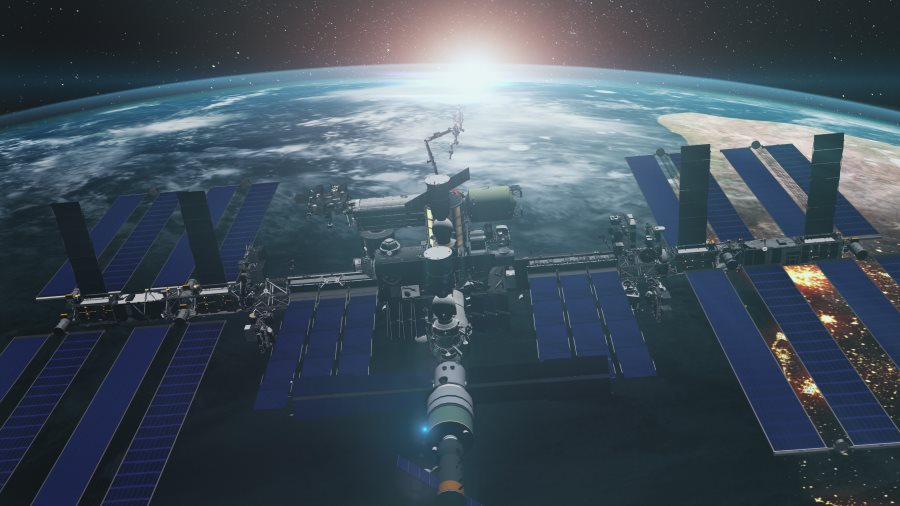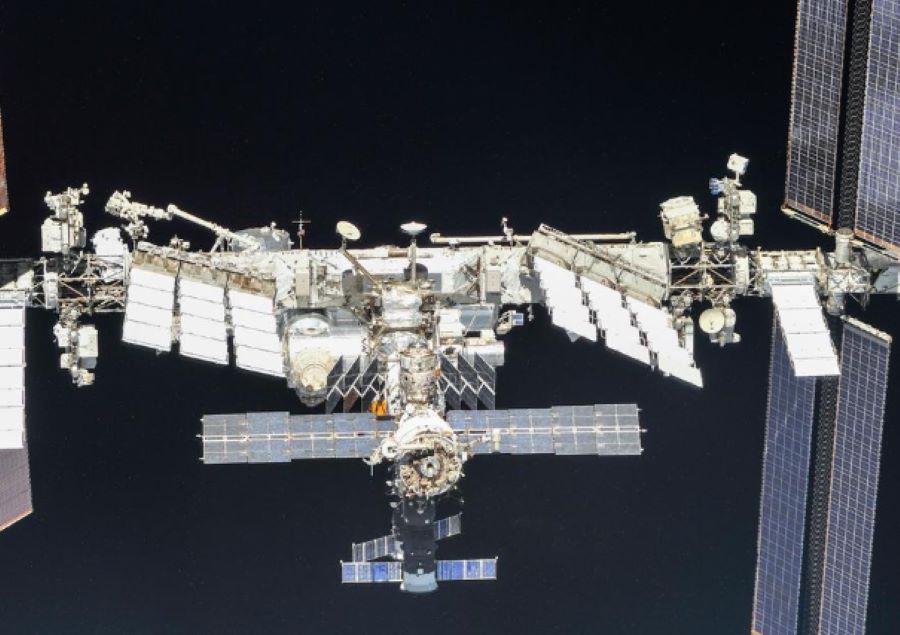7 Crore+ Customers

Affordable Premium

7 Crore+ Customers

Affordable Premium



Observing the sun, studying our planet Earth’s resources, understanding its environment, researching how the human body reacts in the state of weightlessness in space – all these things became possible for humans with the invention of the space station.
What is a space station? What are its purposes? Let’s delve into a simple explanation.


A Space Station is a spacecraft that orbits around the Earth and allows astronauts to perform space research and experiments while living in it for a long duration.
A space station is made human habitable by equipping it with pressurized enclosure, power, necessary supplies, and environmental systems. For communicating with mission controllers on the Earth, they use geostationary relay satellites and for navigating, satellite-based positioning systems are employed.
The largest space station is the International Space Station (ISS), designed between 1984 and 1993. It is a multi-nation construction project by Europe, the United States, Russia, Canada, and Japan. It has hosted more than 250 astronauts and cosmonauts since 1998.
Between 1952 and 1954, Wernher von Braun, a rocket pioneer, envisioned a large wheel-shaped space station with artificial gravity, as described in Collier’s magazine. This concept influenced ideas about space exploration until the late 1960s.
However, Cold War tensions shifted focus to landing on the Moon, delaying space station plans. NASA considered various station designs, including repurposing rocket stages and military reconnaissance platforms.
In 1969, the Soviet Union launched Salyut 1, the first space station shaped like a cylinder with a docking system for Soyuz ferries. It was designed to support two three-man crews for two months.
Tragically, during Soyuz 11's return, a valve failure caused air loss, killing the three cosmonauts. This prompted redesigns to include pressure suits for future missions.

This list of space stations will provide insight into which countries have space stations and which are currently active in space.
| Space Station | Country | Launch Date | Days or Years of Operation | Achievements |
| Salyut 1 | Soviet Union | April 19, 1971 | Approximately 175 days | Salyut 1 was the world’s first space station. It hosted a crew for a record-setting 24-day mission. Tragically, the crew died due to depressurization during reentry into Earth’s atmosphere. |
| Salyut 2 | Soviet Union | April 3, 1973 | Within two weeks of launch, it lost altitude control and depressurized, rendering it unusable. | - |
| Skylab | United States | May 14, 1973 | Approximately 6 years | Skylab was America’s first space station. It orbited the Earth almost 3,000 times before intentionally crashing into the Pacific Ocean. |
| Salyut 3 | Soviet Union | June 25, 1974 | Operational for about 8 months | Salyut 3 was a military space station with reconnaissance capabilities. |
| Salyut 4 | Soviet Union | December 26, 1974 | Operational for about 7 months | Primarily used for scientific purposes. |
| Salyut 5 | Soviet Union | June 22, 1976 | Operational for about 1 year | Another military space station in the Salyut series. |
| Salyut 6 | Soviet Union | September 29, 1977 | Operational for about 10 years | An advanced design with improved living quarters and a refuelling system. |
| Salyut 7 | Soviet Union | April 19, 1982 | Operational for about 8 years | Continued the legacy of Soviet space stations with scientific research and crewed missions. |
| Mir | Soviet Union (later Russia) | February 20, 1986 | Operational for about 15 years | Mir was the first modular space station. It paved the way for the International Space Station (ISS) |
| International Space Station (ISS) | Collaboration between multiple countries, including the United States, Russia, Europe, Japan, and Canada | November 20, 1998 | Ongoing since 1998 | The ISS is a multinational research laboratory in low Earth orbit, supporting scientific research, technology development, and international cooperation. |
| Tiangong 1 | China | September 29, 2011 | Operational for about 5 years | Tiangong 1 was China’s first space station module, serving as a precursor to larger space stations. |
| Tiangong 2 | China | September 15, 2016 | Operational for about 3 years | Tiangong 2 continued China’s progress in space station development and hosted crewed missions and experiments. |
The space station is generally classified into two types based on the architecture: Monolithic and Modular.
Small space stations are sent into space already assembled, but bigger ones are sent in pieces and assembled while in orbit. Operating a space station needs a transportation system to carry crews and equipment and to restock supplies like propellant, air, water, and food.
To use the carrier vehicle's space efficiently, a space station is launched without a crew, and the crew, along with extra equipment, follow in separate vehicles.
Space stations get their electrical power from large solar panels and storage batteries. They also use geostationary relay satellites to stay in constant communication with ground controllers and satellite-based positioning systems for navigation.
Let’s discover the major facts and functions of space stations.
Discover the four future space stations.